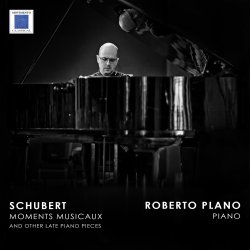
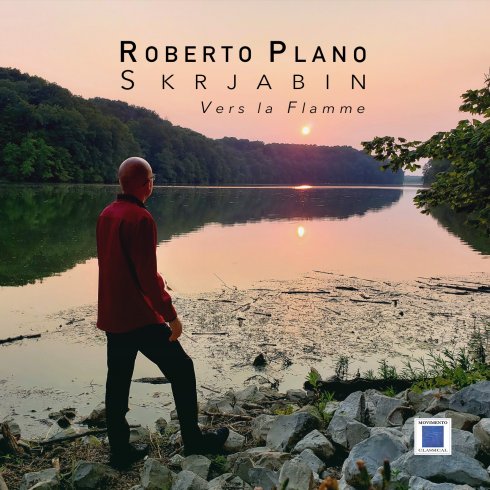
Vers la Flamme
Skrjabin's piano works occupy a centrai piace not only in his own production but, and one could say above all, in the whole literature of the instrument of the early twentieth century, where it is considered similar to that of Prokof'ev, about twenty years younger . But this is an improper combination, because apart from the common Russian homeland (which is no longer the same today, being the latter born in Ukraine) and the large number of Sonatas - respectivelyten and nine - their training was very different, Skrjabin's one being at the Moscow Conservatory with Sergey Taneev and in particular Vassiliy Safonov who, as Faubion Bowers writes, "consecrated Skrjabin as the Russian Chopin''. a statement that wanted to be praiseworthy, but that the world interpreted and used in a negative way with the meaning of "not originai, pedestrian imitator'' (The New Skrjabin, Enigma and Answers, St. Martin Press, New York 1977; ed. it Skrjabin, Gioiosa Editrice, Sannicandro Garganico 1977). Prokof'ev was trained instead in Saint Petersburg with Aleksandr A. Winkler and Anna Essipova, wife of Teodor Leszetycki, teacher of international fame and both coming from Liszt's school (he had also been a student of Cari Czerny) . But, most of ali, the artistic, formai and linguistic outcomes are very different: in the case of Prokof'ev stili referable to the classical-romantic tradition, in Skrjabin in progressive distancing from it towards what the scholar Varvara P. Dernova, in a large essay published at the end of the Sixties of the twentieth century, defines a "unique harmonic system in Russian music of the early twentieth century". System , as Bowers rightly observes again, not really based on the concatenation of the so-called "promeitic" chords made by overlapping fourths (and not anymore by overlapping thirds), rather on tritons, for their nature dissonant but above all "unstable" and polyvalent with respect to the laws of tonai harmony. lncidentally, that kind of chord (e.g.: C-F#-Bb / E-A-D) does characterize the Poem of Fire "Prometheus" for orchestra of 191O from which its definition comes, but one can already find it in the youthful Waltz Op. 1 of 1885.
The choice and the layout of the pages of this CD clearly draw the continuous evolution of Skrjabin 's creative process: from the Op.2 dating back to the student years to the Op. 72 completed in 1914, shortly before his death. lt should be kept in mind that, in addition to the Sonatas, his piano catalogue includes, and in considerable quantity, many minor works - but not for this reason, however, less significant - often gathered in collections and with titles that, those, do refer to the nineteenth-century literature and to Chopin in particular: Waltzes, Mazurkas, Studies, Preludes. He also designed a double cycle of twenty-four pieces each tonally arranged as in the Op. 28 by Chopin (1839); but between 1888 and 1896 he compieteci only the Op. 11 and the Preludes that should have been part of the second series will be distributed among the collectionsOp.13, 15, 16 and 17. There are also generic titles similar in the denomination to the Stucke of the last Brahms and the Second School ofVienna, Schonberg first and foremo st, with whom he shares in part the so-called atona lity . AII the pieces composed from 1883 (Canon, the result of the study of counterpoint with Sergej I. Taneev) to 1892 (Sonata No.1) go back to the period of the Moscow Conservatory and the coeval attendance of the "musical pension" of Nikolaj Zverev, teacher of fame, together with his peer Sergei Rachmaninov. The three Pieces Op. 2 [1]-[3] date back to 1887-1889 and therefore fall into what is, in the opinion of critic Boleslav Javorskij (among the firsts to be intere sted in the music of Skrjabin), the first of the two periods in which his creative path are divided (1833-1902, 1903-1914), characterized by a harmonic writing already projected forward but not yet entirely originai. Op . 2 seems to confirm this reading.
At the time of graduation (1892) and immediately afterwards, Skrjabin was furiously practicing lslamey by Balakirev and the Fantasia sul Don Giovanni by Liszt, with consequent inflammation of the tendons of his right hand; thus, between 1894 and 1895, the two pages of Op. 9 were born . Written therefore for the left only, even if they are "thought " for the two hands as evidenced by the writing on two staves and by jumps decidedly daring fora single hand in the Nocturne [5] that starts after the Prelude in C sharp minor [4], being the latter of a predominantly melancholic char acter ; the reference that is often made to the Nocturne Op. 27 No.2 of Chopin in the same key of D flat major applies especially to the two extreme section s due to the fact that the arduous writing of the two centrai cadence s makes one think more to Liszt . The two lmpromptus Op. 14 [6]-[7] come immediately after the Op. 9, in 1895, a year of intense creativity : from the two lmpromptus Op. 12 to the five Preludes Op. 16 to the first sketches of the only Concerto for piano and orchestra . These are perhaps Skrjabin 's page s which are the most in the manner of Chopin: for the form, which refers to the tripartite form of most of the lmpromptus of the Polish composer, for the cantability of the right hand and for the harmonies that support it: da ring in Chopin wit h respect to the period, here they are fully part of the experimentalism of the time and of Skrjabin him self . The Sonatas No.2 Op. 19 and No.3 Op. 23 are born one aft er the other , between 1897 and 1898, although the beginnings of the first date back to 1892 and its full title is Sonata-fantasia , similar to that of a Sonata composed when he was fourteen years old and which remained unpublished untiI after the Second World War (1947) together with another one of 1889 published even later (1988). The Op. 19, in G sharp minor and the only one among the ten Sonatas in two movements connected between each other, opens with an Andante [8] with formai traits referable to the Sonata tradition: a structure similar to the sonata form, thematic opening that returns in the development and in the final bars, contrasting character of the two theme s: dramatic the first (repeated chords in ¾), singing and delicate the second . Ornamental figures (arpeggios) widen its breath untiI the development built on thefirst theme to which, in the recapitulation , the second is added in fortissimo; in the Coda the tension dissolves in other arpeggios until a recapitulation of the initial figure arrives, that marks the connection to the next Presto [9]. This is a perpetuum mobile that could recaiI the conclusive Presto of Chopin's Sonata Op. 35, even if Skrjabin's one is much wider and offers, in the centrai section, a definite melodie line, entirely absent in the Chopinian Finale .
Sonata No. 3 is the only one in four movements and the last one articulated in distinct movements, for each of which a program was writt en, a "state of mind'; whose visionarity anticipates what one can find in the following Sonatas and Symphonic Poems : 1. Drammatico [10] ("The soul, free and wild , thrown into the whirlpool of suffering and strife" ); 2. Allegretto [11] ("Apparent momentary and illusory respite; tired from suffering the soul wants to forget, wants to sing and flourish, in spite of everything. But the light rhythm, the fragrant harmonies are just a cover through which gleams the restless and languishing soul"); 3. Andante [12] ("A sea of feelings, tender and sorrowful : love, sorrow, vague desires , inexplicable thoughts, illusions of a delicate dream"); 4. Presto con fuoco
[13] ("From the depth of being rises the fearsome voice of creative man whose victorious song resounds triumphantly. But too weak yet toreaeh the acme he plunge s, temporarily defeated, into the abyss of non-being"). The charm of this Sonata, one of the masterpieces of Skrjabin's pianism, lies in the very daring harmonies and in the writing characterized by transcendental technique, especially in the second and in the last movements; there is a partially simplified version of the problematic arpeggios of the Presto that Skrjabin himself performed in concert. The program, which initially didn't appear on the printed score, would eventually be published by the Russian magazine Il contemporaneo musicale in 1915.
With the two Mazurkas Op. 40 [14]-[15] (1903) Skrjabin ends his relationship with this genre, started in 1891 with the Op.3; they are characterized by a kaleidoscope of harmonies finally out of tonai system. The Op. 57 (1908) follows the Sonata No. 5 a year later and is contemporary to the Poem of Ecstasy for orchestra, two pieces that brings us into the mystical-transcendental season of the Russian composer, resolved in No.5 in a single movement andina marked departure from to nality. In this context, the two pages of Op. 57 - respectively Désir [16] and Caresse dansée [17] - are characterized by a rather unresolved rarefaction of the writing, even if the tendency to establish subtle links between the two pieces never fails, resulting in a common expressive delicacy .
Vers la Fiamme Op. 72 [18] dates back to Skrjabin's last year of activity before his death (1914), along with a small group of smaller pieces; the slow and relaxed initial chords generate an increasingly dense crescendo of harmonies that extends progressively throughout the keyboard until a paroxysmal fortissimo is reached, which symbolically refers to the lire that he intended as "core of the soul of the World" (Bowers) and which he already evoked in the Poem of Fire for Orchestra (191O).

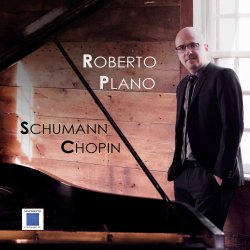
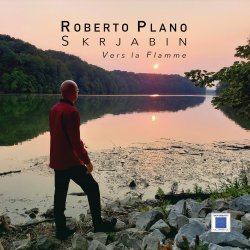
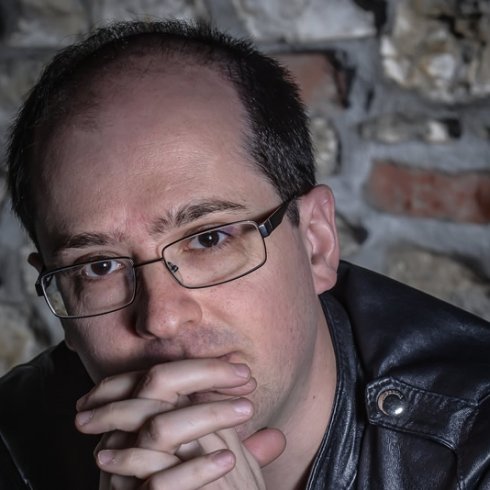
Roberto Plano
Born in Varese in 1978, Roberto Plano imposed himself on the attention of the musical world with the victory of the prestigious Cleveland International Piano Competition. With the affirmation and the prizes obtained at the Honens International Piano Competition and at the 12th Van Cliburn International Competition he began his concert career that saw him participate in numerous tours throughout North America, where he participates in recitals in more than 30 states in the USA and have led him to play in the studios of the major American, Canadian and Italian radios, such as NPR (Performance Today) in Washington, WGBH in Boston, WNYC in New York, WFMT radio in Chicago, CBC in Toronto, BBC Radio 3 (London), RadioRai 3, Radio Classica, Radio Vaticana; his debut recitals at the Chopin Festival in Poland and at the Herculessaal in Munich were broadcast by Polske Radio 2 and from Bayern 4 Klassik. He has performed in some of the most important Italian and foreign concert halls and for prestigious Italian and international festivals. In his career he has played as a soloist with prestigious orchestras in Italy and abroad. In addition to the awards obtained at Cleveland, Van Cliburn and Honens and the victories in Italy of Treviso, Togni and Scriabin he was awarded at the Iturbi Competition in Valencia, at Sendai International Music Competition, dublin international piano competition and geza and geza anda zurich. The documentary Encore, of which he is one of the protagonists, has been broadcast throughout North America, Europe and North Africa; Philippe Entremont selected him for a television broadcast related to Mozart's music, broadcast in Japan by NHK, and he played for the satellite television channels Mezzo and Arte, as well as for the Rai and Mediaset networks. Very active also in the field of chamber music, he has collaborated with numerous string quartets, including the Cremona Quartet, the Takacs Quartets, Fine Arts, St. Petersburg, Jupiter, ENSO, Vogler, Henschel, the First Parts of the Teatro alla Scala and with soloists such as Enrico Bronzi, Gabriele Cassone, Ilya Grubert, Giovanni Scaglione and Amiram Ganz and with the jazz pianist Paolo Paliaga, with which he recorded a record – Inspiration – dedicated to the fusion between classical and jazz music. The album recorded for the Concerto and dedicated to Andrea Luchesi – a world first recording – has been reviewed with the highest rating (5 stars) by the monthly MUSICA. Already a member of the jury in several competitions (including the Singapore Piano Competition) he was invited to be part of the commission of the Cleveland International Piano Competition, which was held in the USA in August 2013. As a lecturer he has held numerose master classes in important institutions. He is President of the Musical Association "Alfred Cortot", founded in 2011 with his wife Paola Del Negro, with whom he plays permanently in a piano duo.
